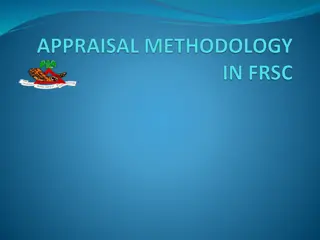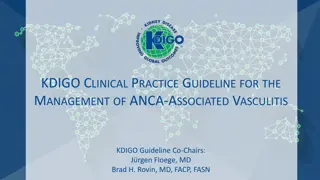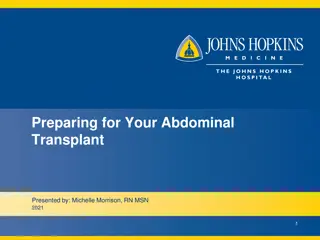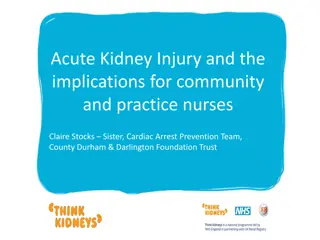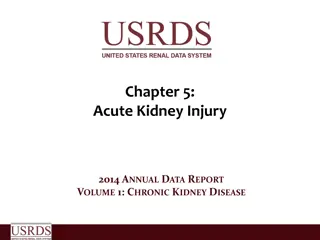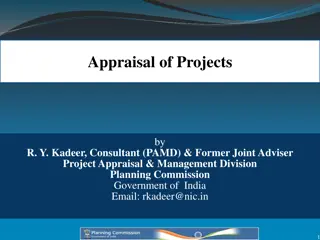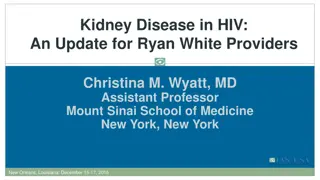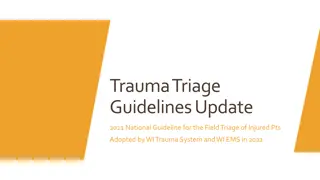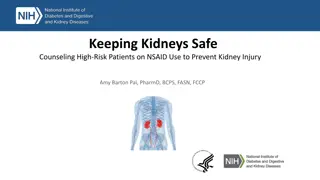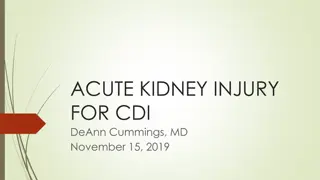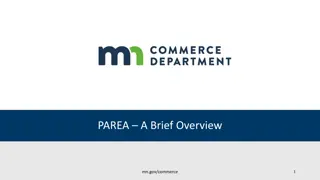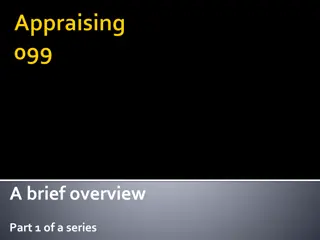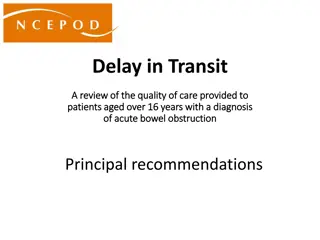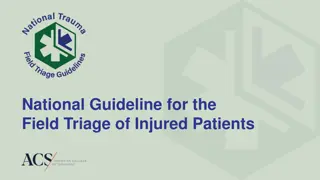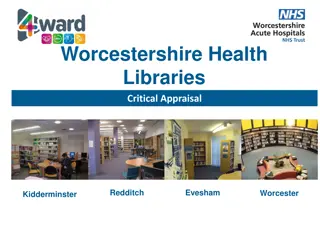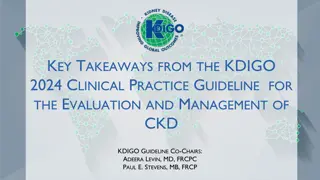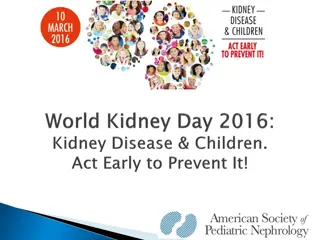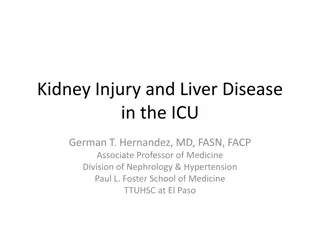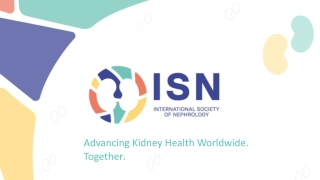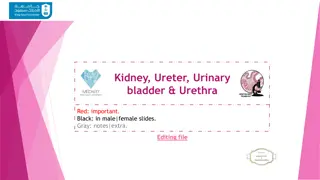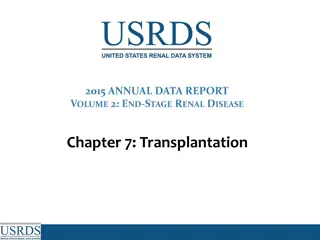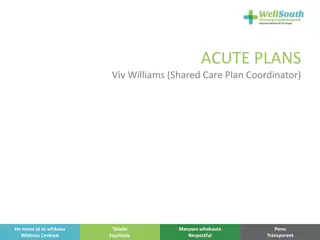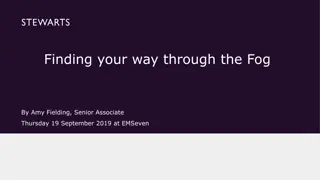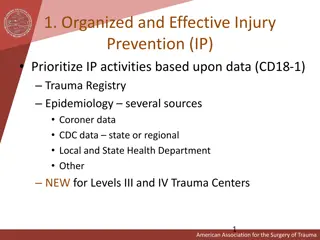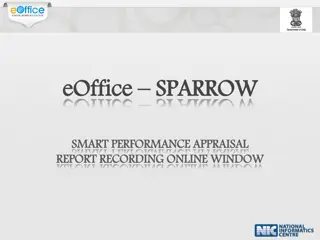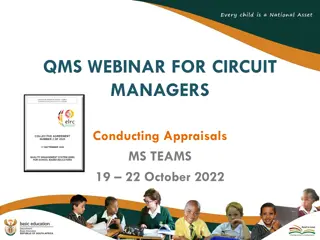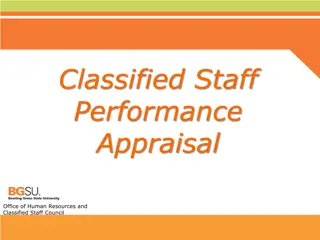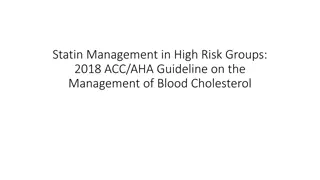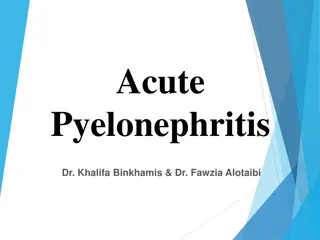Critical Appraisal of Acute Kidney Injury Guideline by Anil Mathew Philip
This critical appraisal evaluates the guideline on Acute Kidney Injury by Anil Mathew Philip using AGREE II criteria. It assesses the scope, stakeholder involvement, rigor of development, clarity of presentation, applicability, and editorial independence of the guideline in detail.
Download Presentation

Please find below an Image/Link to download the presentation.
The content on the website is provided AS IS for your information and personal use only. It may not be sold, licensed, or shared on other websites without obtaining consent from the author. Download presentation by click this link. If you encounter any issues during the download, it is possible that the publisher has removed the file from their server.
E N D
Presentation Transcript
Critical Appraisal of a Guideline Anil Mathew Philip
AGREE II Domain 1. Scope and Purpose Domain 2. Stakeholder Involvement Domain 3. Rigour of Development Domain 4. Clarity of Presentation Domain 5. Applicability Domain 6. Editorial Independence
Domain 1. Scope and Purpose Are the overall objectives of the guideline are specifically described? Purpose of this guideline was to present the available evidence for evaluation and management of Acute Kidney Injury. Health intent- Diagnosis and management of AKI. Expected benefit- Approach to AKI Targets Audience- All clinicians(internist, nephrologist, intensevists), caring for patients with AKI due to various eitiologies Population- Adults with AKI Score- 7
Are the health questions covered by the guideline specifically described? Yes The guideline has gone through different aspects of eitiology, diagnosis and management comparing the various available guidelines(KDIGO, RIFLE, AKIN) Target population- mentioned Intervention- mentioned Health care setting or context- mentioned Score- 7.
Are the population (patients, public, etc.) to whom the guideline is meant to apply specifically described? Yes Target population- Mentioned Gender and age- Mentioned Clinical condition- mentioned Severity/stage of disease- Mentioned Excluded population- Most of the literature reviewed were RCT s/Meta Analysis/Systematic Reviews and they have mentioned which patient populations were excluded. Eg. 2 RCT s had excluded CKD patients in assesment of AKI in non cardiac surgery. Score- 7
Domain 2. Stakeholder Involvement Does the guideline development group include individuals from all relevant professional groups? Name- mentioned Discipline/content expertise- mentioned Institution- Mentioned Geographical location- Mentioned Description of the member s role in the guideline development group- not mentioned Score-6
Have the views and preferences of the target population (patients, public, etc.) been sought? No Score- 1
Are the target users of the guideline clearly defined? Yes All clinicians caring for patients with AKI Clear description of intended guideline audience- Yes Description of how the guideline may be used by its target audience- No Score- 5
Domain 3. Rigour of Development Were systematic methods used to search for evidence? Studies from PubMed (1990 through July 2015), Cochrane Database of Systematic Reviews AKIN/KDIGO/RIFLE and review of there guidelines. Not included other languages- English and Japanese Time period searched- 1990 through July 2015 Search terms- specified Full search strategy- not mentioned Not mentioned regarding conflict resolution. Score- 5
Were the criteria for selecting the evidence clearly described ? Only RCTs and systematic reviews were included. AKIN/RIFLE and KDIGO guidelines were also reviewed Articles published in English and Japanese were only included The relevant population, management strategies were described in different age groups, Pediatric, adult and geriatric populations. Have compared various methods of diagnosis. Score- 6.
Were the strengths and limitations of the body of evidence clearly described ? Yes Study design- mostly RCT s and Cochrane Systematic Review Study methodology limitations (sampling, blinding, allocation concealment, analytical methods)- Not mentioned, have given a grading of the quality of evidence. Consistency of results across studies- Not mentioned Direction of results across studies- Not mentioned Magnitude of benefit versus magnitude of harm- Not mentioned Score- 4
Were the methods for formulating the recommendations clearly described? No Quality of evidence for each have been mentioned. But details of how the panellist reached the recommendations are not clear. Score- 4
Have the health benefits, side effects, and risks been considered in formulating the recommendations? Yes, they have looked at various guidelines and have formulated a guideline which is appropriate to different settings Adverse effects not mentioned Comparison between various treatment options are mentioned- not clear. Score- 4.
Is there an explicit link between the recommendations and the supporting evidence? References for supporting evidence for each recommendation are mentioned and easily identifiable for the user. Score- 5.
Has the guideline been externally reviewed by experts prior to its publication? Not mentioned. Score- 1
Is there a provision for updating the guideline? Not mentioned Score- 1
Domain 4. Clarity of Presentation Are the recommendations specific and unambiguous? They have extensively looked at different eitiolgies, outcomes and across age groups. Score- 6.
Are the different options for management of the condition or health issue clearly presented? Yes Score- 6
Were the key recommendations easily identifiable? Yes They have a given a summary of the recommendations throughout the guideline, after each clinical question/scenario Score- 6
Domain 5. Applicability Does the guideline describes facilitators and barriers to its application ? Not mentioned Score-1
Does the guideline provide advice and/or tools on how the recommendations can be put into practice? In the guideline they have given summaries adequetly which can be used as a tool for management, have emntioned indications for RRT/ransufuions/loop diuretics and Dopamine along with the evel of evidence. Special situations have also been covered eg. Post surgical patients of various surgeries. Score- 6.
Have the potential resource implications of applying the recommendations have been considered? Not mentioned. Score- 1
Does the guideline present monitoring and/or auditing criteria? Not mentioned Score- 1.
Domain 6. Editorial Independence Has the views of the funding body influenced the content of the guideline? Not mentioned Score- 1
Has competing interests of guideline development group members been recorded and addressed? Not mentioned at all. Score- 1
RATE THE OVERALL QUALITY OF THE GUIDELINE 4 I would recommend the guidelines with modifications.


